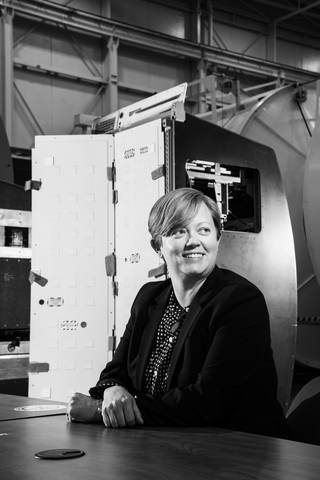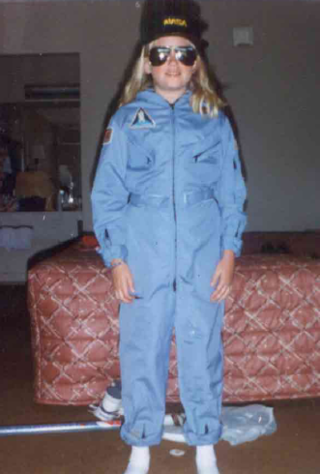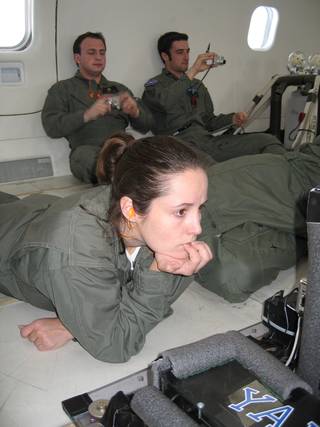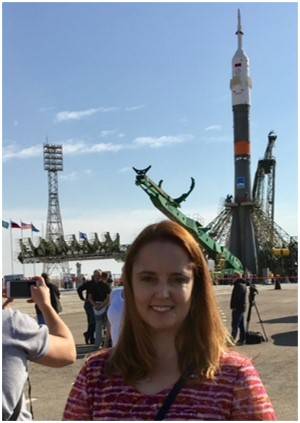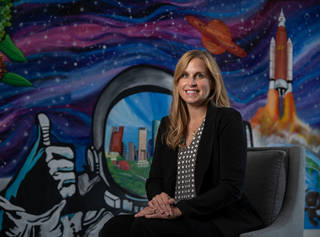At the forefront of human space exploration, the women of the International Space Station Program are creating opportunities for the future. Driven to inspire the generation of young women who will soon follow in their footsteps, the numerous space station teams are rich with female engineers
At the forefront of human space exploration, the women of the International Space Station Program are creating opportunities for the future. Driven to inspire the generation of young women who will soon follow in their footsteps, the numerous space station teams are rich with female engineers and leaders who work hard on the ground and in orbit to ensure the seamless operation of the space station 250 miles above.
Introduce a Girl to Engineering Day is Feb. 23, 2023, a day when NASA recognizes the contributions made by women engineers and to encourages the young women of the Artemis Generation. NASA’s women are trailblazers and contribute to the success of the agency’s missions in remarkable ways, including a strong history of women-made advancements.
Several women at NASA’s Johnson Space Center in Houston are continuing to follow science, technology, engineering and math (STEM) paths that are progressing into leadership positions within the station program today.
Laura Shaw is the deputy manager for the station program’s Mission Integration and Operations Office and has worked for NASA for 24 years. She holds a bachelor’s degree in mechanical engineering from Purdue University in West Lafayette, Indiana, about 80 miles from her hometown of Crown Point, Indiana. Shaw started her NASA career while in college as a Pathways intern at Johnson. After she received her degree, she worked in Johnson’s engineering directorate on water system hardware, both in a laboratory environment and flight hardware development for the space shuttle and space station. Shortly after, Shaw became the project manager for the development of the station’s potable water dispenser that is used by the station’s crew members to rehydrate food and for drinking water. When this project was completed, she supported system-level management of the station’s Temperature, Humidity Control, and Ventilation System which is a part of the Environmental Control and Life Support System.
Shaw’s collaboration with the space station gave her the opportunity to lead, develop an overall plan, and execute a large effort to upgrade the recycling system for future Moon and Mars missions. Many of these systems are undergoing testing on the space station today. After being promoted to a supervisor and manager over the space station’s suite of vehicle systems in 2023 — including electrical power, thermal control, crew health care systems, and flight crew systems — Shaw took on the role of deputy manager for the station program’s Mission Integration and Operations Office.
Shaw plays a key role in planning which cargo within crewed missions will launch and return, developing the cargo launch and return layouts on various resupply vehicles, ensuring the necessary consumables and crew supplies are available onboard the space station, and planning out work for crew members.
Share your path from engineering to leadership. Where there any challenges you faced during the journey?
“I’ve taken a methodical stair-step approach in my career. I started by developing my technical expertise with hands-on work in the workshop/laboratory environment and with flight hardware development from scratch. Then I started putting those pieces together with system and eventually multisystem management of spacecraft flight hardware. I’m now at a level where I’m looking at both the station vehicle and the space station program. I believe it is very important to develop a strong technical base to draw from as you start to rise within an organization. Relationships with people and the ability to manage them is something that engineers often don’t initially focus on but having good communication skills and the ability to work with others is very important. The big jump from being an excellent engineer to an excellent engineering leader is the ability to work with and guide others to achieve a common goal. Often the people part is harder than the technical part.”
Anyone you look up to?
“Female leaders that have come before me are very inspirational. I had the chance to meet Eileen Collins, NASA’s first female space shuttle commander, and was blown away by her humility and grace. She has always been one of my heroes. But there are so many strong and highly capable women leaders in the International Space Station Program as well as throughout NASA and the commercial space industry. These women continue to demonstrate that not only are women engineers just as technically competent as their male counterparts, but we also bring different perspectives to solve problems and we often lead with a high level of compassion. This diversity makes the aerospace community stronger and better.”
Kristi Duplichen is the deputy manager for the station program’s Transportation Integration Office. With a bachelor’s degree in physics from Texas State University in San Marcos, and a master’s degree in business administration from the University of Houston-Clear Lake, Duplichen has dedicated 23 years to NASA taking on a variety of roles that have allowed her to advance to her leadership position now. Originally from East Bernard, Texas, Duplichen started her career as a contractor with United Space Alliance and became a certified space shuttle and station flight controller responsible for coordinating logistics and the transfer of space hardware to and from the space station. In 2006, Duplichen was hired by NASA and joined the Safety and Mission Assurance Directorate where she focused on keeping astronauts safe while in orbit. Ten years later, she worked as a contracting officer’s representative for two major space station contracts — one of the contracts packed the space hardware for transportation to the station, and the other contract managed logistics in Russia and provided the Russian language training, translation, and interpretation.
Fast forward to 2023, where she works hard to ensure all visiting vehicles to the space station approach, mate, and depart safely while managing the cost, schedule, and technical activities in partnership with commercial providers and international partners.
What advice would you give girls interested in pursuing engineering?
“Follow your dreams even if it seems hard. If you study the things that you find interesting, you will continue to work hard even when it’s challenging. You can do the things you want to do with a little grit and positive attitude. Learn to work in a team because we can achieve more in a team.”
What inspired you to pursue STEM?
“Growing up I was always interested in math, science and especially space. I dreamt of working for NASA and being a part of exploring space. I remember many nights lying on my driveway staring up at the stars and dreaming of what was out there. In high school, I was interested in all my science classes, but my favorite was physics. When I went to college, I was afraid majoring in physics would be too hard for me. I chose a different path but soon realized I needed more of a challenge. I still had that interest in physics, so I changed my degree the second semester of college and never looked back.”
Mary Lawrence is the deputy manager of the station program’s Vehicle Office and holds a bachelor’s degree in mechanical engineering from Penn State University in State College, Pennsylvania.
From Erie, Pennsylvania, Lawrence began her NASA career as a member of the flight control team operating the station’s command and data-handling system. Advancing into operations lead roles for space station assembly and expedition missions, Lawrence became certified as a Telemetry, Information Transfer, and Attitude Navigation (TITAN) flight control officer supporting station motion control, communications, tracking, command, and data-handling systems operations. In 2012, Lawrence became the Communications Radio Frequency Onboard Networks Utilization Specialist (CRONUS) group lead responsible for all operational, technical, and personnel aspects of the station’s command and telemetry flight controller operations.
What is your advice to girls interested in pursuing engineering?
“I did not have a clear understanding of the immense opportunities that a degree in engineering could present when I first got exposure to the field. I feel it is important for anyone pursuing a career path to find mentors and resources across the field in diverse roles and locations to gain a greater understanding of what opportunities exist. This is also helpful in starting to create a network of resources that will prove beneficial throughout all phases of your career. And keep an open mind as opportunities and new ideas that come your way!”
Lawrence was selected as a NASA flight director in 2015 supporting space station operation. She was the lead flight director for the Expedition 54 mission, as well as cargo missions, a software upgrade, and a successful battery upgrade project in which batteries supporting power systems were removed and replaced using a choreography of robotics operations and two spacewalks.
What inspired you to pursue engineering?
“I had wonderful teachers in high school that recognized my aptitude and interest in science and mathematics that provided mentorship and encouragement to explore what a career in engineering would be like. I was able to pursue an opportunity in a program at a local college that gave me a head start on accumulating credits toward a degree, but also provided additional exposure to the exciting field of engineering.”
Share your path from engineering to leadership. Where there any challenges you faced during the journey?
“Anyone will face an individual set of challenges on their chosen career path. For me, it was mostly my internal voice that I needed to overcome in making choices along my path, whether that was the feeling of not being ready or periods of self-doubt when being presented with a new challenge. However, I found that surrounding myself with a solid support system and not being shy to ask for help or mentorship helped set me on a path that presents the opportunities for me to continue to contribute to this incredible mission and to also stretch and grow in the challenges along the way.”
Countless women have contributed their skills, efforts, and expertise to the assembly, operation, and effectiveness of the space station. With the strength of our female workforce under the space station, we can conduct experiments and research that benefits the education of humans back on Earth.
Keep up to date with the latest news from the International Space Station by following @space_station and @ISS_Research on Twitter, and the ISS Facebook and ISS Instagram accounts.



























